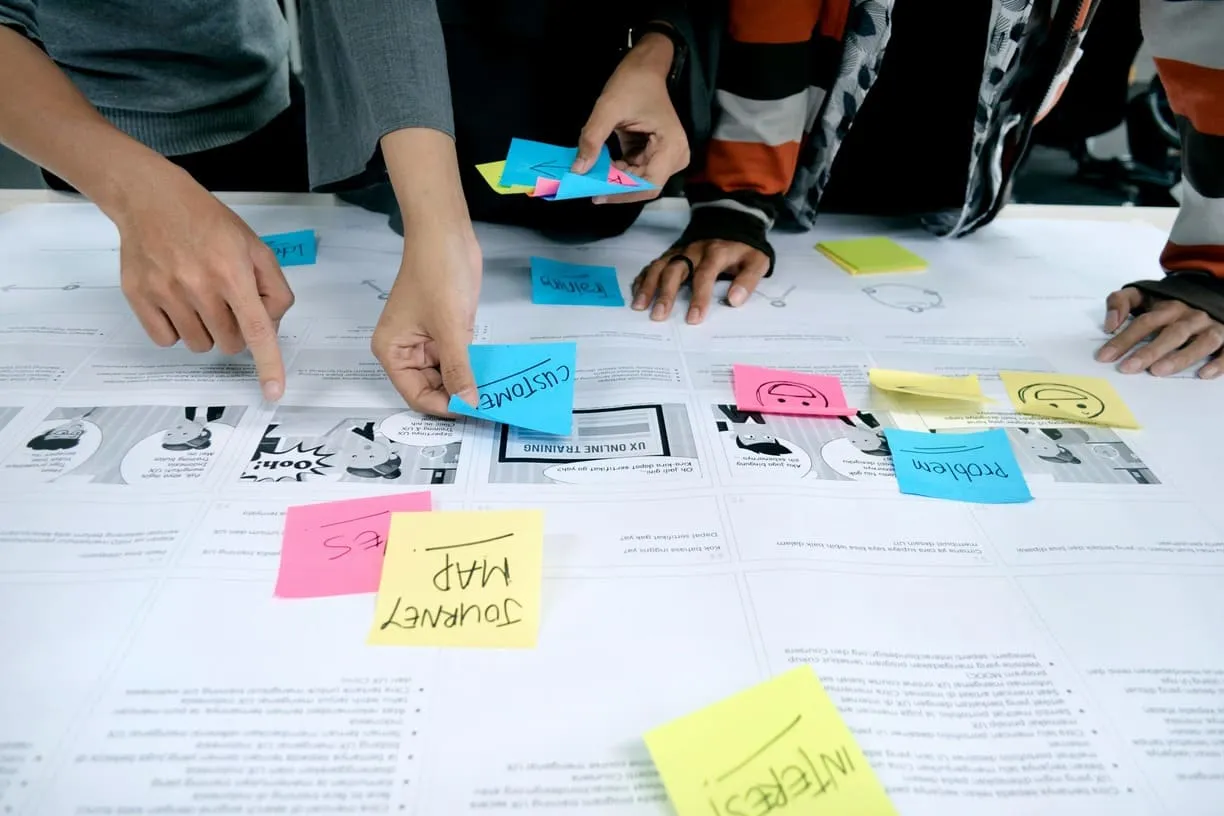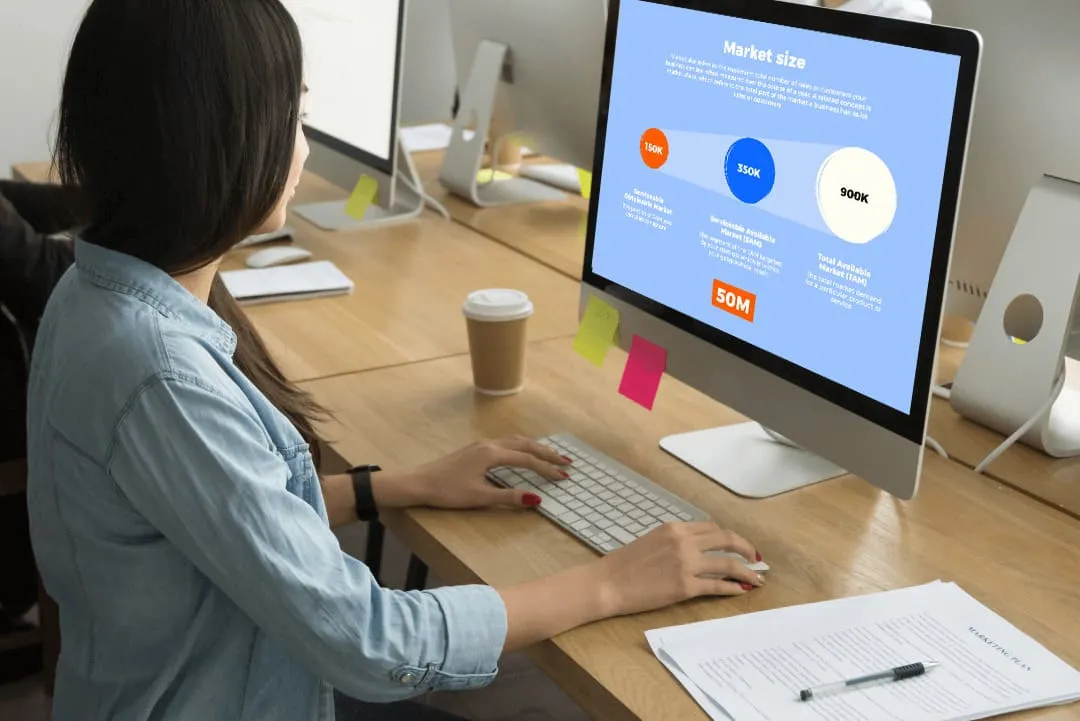
Mastering the Pitch Deck Problem Slide: Tips & Best Practices

Many startups focus on the problem solution slide as they create their pitch deck presentation. However, even the most unique solution will be wasted if the investors don’t understand the full scale of the problem you plan to attend to.
According to the recent feedback from various reputable pitch deck consulting services, investors spend as many as 7 seconds on a presentation to decide whether it is worth their attention and potential funding or not.
You can use your pitch deck problems slide as the cornerstone to grab the attention and keep the viewers interested and alert throughout the presentation.
Today, we’ll highlight the utmost importance of the problem slide, discuss what it should consist of, and point out the main mistakes to avoid. A list of handy tools that come in handy when creating a pitch deck presentation will be a handy bonus to speed the process up.
Are you ready?
Why is The Problem Slide Crucial?
“You never get a second chance to make a first impression.” Oscar Wilde
It takes seconds for investors to fall for your story or lose all interest in the presentation. A well-thought-out pitch deck problem slide may serve as the desired trigger to keep the viewers engaged.
The role of the problem slide in setting the stage for your solution
Before you present your innovative solution, you must ensure that the audience is fully aware of the pains it tends to cause. As you stress the existing problems your startup can help solve, you showcase your deep understanding of the market, its dynamics, and potential gaps you can fill in.
Once you pinpoint the major issues, it is twice as easy to present your service or product as the logical solution worth investing in. Keep in mind that the problems you outline mustn’t be the most obvious ones, but the full-scale impact they will have on the consumer base should be well emphasized.
How does the problem slide capture investor attention and set the context?
The problem slide in a pitch deck must be well-illustrated and vivid enough for the audience to grasp the challenges you want to overcome. Once you present a crystal-clear layout of the existing issues and make them resonate with every person in the room, you will keep them involved till the end of the presentation.
The best way to ensure the desired outcome is to gather enough data, spice it up with real-life examples, and stress the urgency of the matter. Feel free to personalize the story to intensify the emotional bond and enhance the gras with appropriate jokes or anecdotes.
Last but not least, you have to dress the presented problems so that the investors can’t but notice the lucrative opportunities they can reap signing up with you. Thus, it is not enough to enumerate the issues you can solve. You have to merge the problem with the solution so that you get a compelling story, propelling the immediate investment.
Critical Elements of an Effective Problem Slide

Most effective problem statement slide examples rely on a few vital elements programmed to boost the success rate of your presentation.
Clear Statement of the Problem: The importance of being concise and direct
The main goal of the Problem slide is not only to trigger investors’ interest but also to help them grasp the full gravity of the problem in a matter of seconds.
For instance:
“1.5 million people die from diabetes yearly.”
or
“Inefficient supply chain management leads to 30% loss in revenue”
Such statements indicate the core of the problem without beating around the bush. Lengthy statements will lead to shifted focus, and direct statements stress the urgency of the problem. Even if the audience has little idea of what the solution is about, they will be curious to learn more about it.
Relatability: Making the problem resonate with the audience
Airbnb is one of the most commonly discussed and deservingly praised examples of pitch decks. If we date back to one of their first presentations, their Problem slide was centered around feeling at home no matter where you travel.
The team could have dived into the financial aspects of their business venture or stressed the pressing need to find affordable accommodation in every city, but they tapped into the emotional side of traveling. Was this effective? Of course, since the problem resonated with every person present.
Oftentimes, the notion of empathy seems to be inappropriate when it comes to a pitch deck problem statement. However, empathy can be table-turning. If you learn how to fill into the audience’s shoes and create an emotional bond with them, you will ensure a deeper understanding of the existing problem.
Supporting Data: Using statistics and figures to reinforce the problem
Both the problem and solution slides must be reliable enough for the audience to resonate with the presented research. Various statistics, analytical data, and other relatable figures double the credibility of the discussed challenge. Moreover, trending data-driven claims will stress the urgency of your solution.
However, when you are gathering all the necessary information, it is utterly easy to get carried away. So, it is mandatory to include only up-to-date stats and use credible sources as your primary references.
Pro Tip:
Use statistical data from well-known research institutions such as Oxford University, Harvard University, Stanford University, etc. Refer to analytical databases such as Statista, eMarketer, Warc, etc., and use industry-specific reports.
Visuals: The role of images, graphics, and diagrams in conveying the problem
Sometimes, a picture is worth a thousand words, and this statement is exceptionally true when it comes to a success-oriented pitch deck problem slide example. Hand-picked images, graphs, and diagrams, along with other visuals, can convey your message, aiming right at the core of the problem.
It’s worth noting that visuals are more likely to stir up necessary emotions, making the audience twice as susceptible to the solution you have on offer. However, it is critical to preserve the balance between the visual and textual components of the slide. The best combo is when one completes another without standing out as separate elements of the presentation.
Storytelling: Infusing the slide with a short narrative or example
Storytelling is the native language of the human brain. Thus, if you transform your problem slide into a compelling narrative, you will have more chances to make it more memorable. There’s scientific proof to that since stories trigger different parts of your brain, including those responsible for emotions.
As you form an emotional connection with your viewers, you ensure that they start to relate to the existing problem and crave a handy solution to deal with the imposed strain.
Moreover, short stories and fun facts are twice as easy to remember than plain statistical data. Such an approach ensures that your audience will reflect on the gained knowledge even after the presentation is over.
Common Mistakes to Avoid
.webp)
It would have been a lot easier to work on a problem slide in the pitch deck if there were no underwater stones and pitfalls to watch out for. Thus, the WhitePage experts have compiled a list of the most common mistakes you should keep an eye out for when creating a problem slide.
Excessive data loads
As you’ve been working on the slide for a while now, you may want to introduce as much information as possible into it. However, a great variety of analytical stats, graphs, and charts will have the opposite effect on your investor pool. Let’s say you pack your presentation with different data showcasing major market trends. Yet, if the audience has a limited understanding of how this information relates to your project, it will only confuse the viewers and shift their focus. When the audience can’t connect the given stats with the presented problem, it will undermine its importance.
Utterly vague or generic presentation
Sometimes, you can express the problem so that it seems too generic and uninteresting at the moment. For example, say that the industry requires more innovative solutions without presenting specifics. You will only make the investors think that your solution isn’t as pressing or world-changing as other startups. Your chances of landing an investment deal will drop.
Neglected the target audience
The solution you present has been designed to suffice the particular needs of a definite group of people to make their lives easier. However, when you present a problem that seems to have a distant relation to the target audience, it will break the investors’ concentration. The lack of correlation will disconnect the viewers from the problem, making the solution uncompelling.
Poor-quality or irrelevant visuals
As it’s been already stated, our brains love a good story that is supported by relevant visuals. When you introduce graphs, clips, or images that force the viewers to strain to make out what is depicted or how it relates to the story, you will instantly distract them from the central message of the slide. As the audience’s attention shifts, the full scale of the problem you present will fade. Moreover, low-quality visuals will make the investors doubt the whole credibility of your pitch and that is a road to nowhere.
Design Tips for an Engaging Problem Slide

Now that we’ve discussed the main pitfalls to avoid when creating a compelling problem slide, it is time to share some practical problem slide tips to boost the chances of your presentation’s success.
Color Psychology: the right color palette
Not everyone knows that many people perceive colors as primary triggers of emotions and associations. That is why a well-thought color palette for your problem slide will help you transfer the main message along with the importance of the issue to the audience and amplify its impact.
For instance, green shades are closely associated with nature, and an environmental problem slide would certainly benefit from it. At the same time, red will indicate the scale of the problem, its urgency, and potential danger.
Keep in mind every situation has an applicable particular color range. You have to define your primary color associations and use them carefully so that the slide does not look overwhelming.
Font Choices: Proper readability and aesthetics
A correct font for your pitch deck problem slide template is as vital as the color palette. Once you come up with a logical font scheme, its readability, and visual appeal, it will ensure that your message gets to the viewer unaltered. The main trick here is to find a balance between font types and sizes. Try not to use more than three fonts per slide. Moreover, stick to a clear hierarchy to enhance both the perception of the problem and the slide’s aesthetics.
Layout & Spacing: Easy-to-follow structure
Harmonious and balanced slides have a better chance of conveying the message to the audience so that it has a desired impact. That is why you should pay attention to the slide’s spacing so that every element is in sync with the rest. Try not to neglect the logical layout of the problem. Very often, minimalism and concise structure help investors fully submerge into the depth of the problem.
Quality visuals: effective integration of images and icons
It’s already been mentioned that visuals connect with our brains faster than textual statements of the same issue. However, not every image or icon counts. Should you neglect implementing high-quality images into your presentation, it will have a reversed effect on the viewers. That is why you should introduce only clear visuals, but that’s not all. You must pick those elements that have a direct relation to the problem. Moreover, you have to come up with a strategy on how to place these visuals for them to have the best effect.
Examples of Compelling Problem Slides
Sometimes, all you need is to visualize the theory to grasp it to the fullest. Considering that, WhitePage professionals have a few real-life pitch deck problem slide examples to help you digest the information.
.webp)
Simplicity is the key. Without cluttering the slide with loads of unnecessary data and details, the startups chose to stick to a clear and concise problem statement. There are no distractive elements, only direct emphasis displayed through proper layout and fonts.
.webp)
The main goal of the company is to search for human potential and unleash it fully to inspire leaders. In their problem slide, they stick to impactful data backed by high-quality visuals and a neutral color palette. Pay attention to the font hierarchy and strategic layout.
.webp)
Just like Airbnb, Uber sticks to an uncluttered and clean layout of the problem slide. However, they stick to the same unaltered order and precise representation of information. Critical points are highlighted so that they stand out but do not ruin the overall balance of the slide. As you can see, correlating icons are used to support each statement, while the main visual anticipates an effective solution that the company has to offer.
Tools & Resources for Creating Your Problem Slide
It may be a tad challenging to craft a compelling startup pitch deck problem slide without additional help. We’ve gathered here a list of tools and platforms that may help you succeed with the task effortlessly.
- Microsoft PowerPoint – create and personalize powerful problem slides.
- Unsplash – find appealing images to convey your message clearly.
- Data.gov – discover industry stats and insights to back your story up.
- Font Squirrel – organize the layout with impactful fonts.
- Slack – stay tuned with the team to sync your presentation for a successful outcome.
Conclusion
It is easy to undermine the importance of a pitch deck problem statement slide until you learn about the role it plays in a success-oriented pitch deck. Aside from presenting the pressing matter, you have the means to solve it. A problem slide will serve as a bridge between you and the investor pool.
A compelling example of a problem slide in a pitch deck relies on multiple pillars, and it takes a thorough approach to design the presentation that resonates with the audience and convinces them that your product or service can revolutionize the market.
Should you feel like you may need a friendly push in the right direction – contact our expert teams and have your worries dispersed through the professional presentation development services we offer!
Talk to a presentation design expert now!
Let's Talk
FAQ

Read more




.avif)

.webp)
.webp)




































